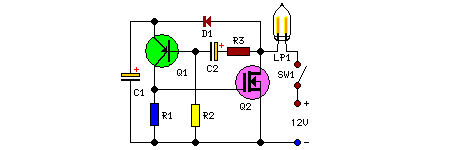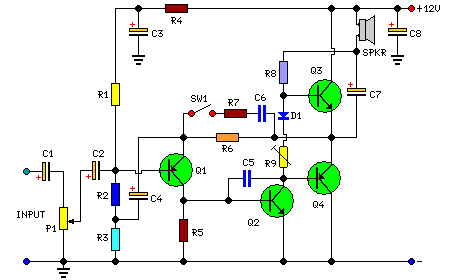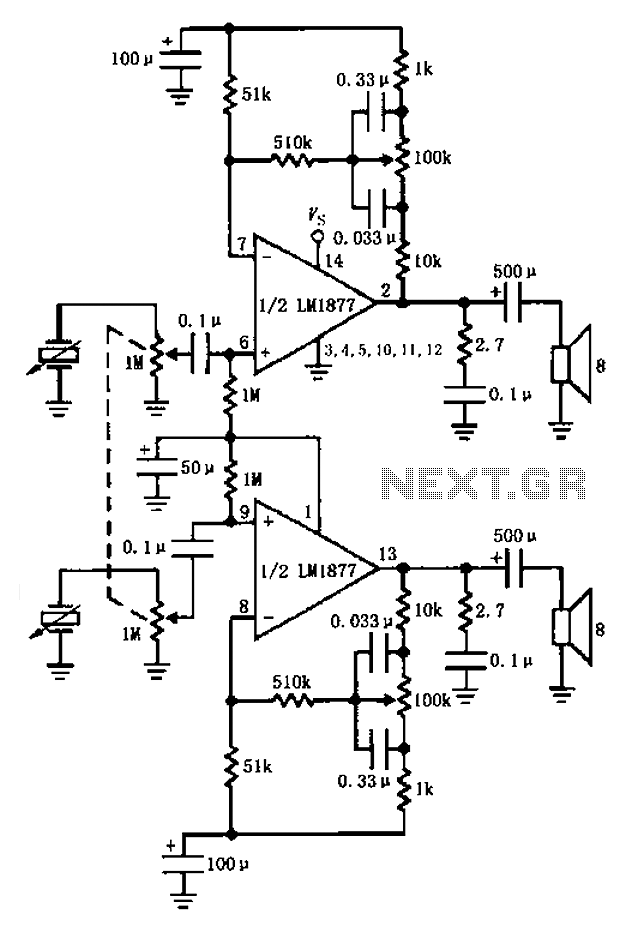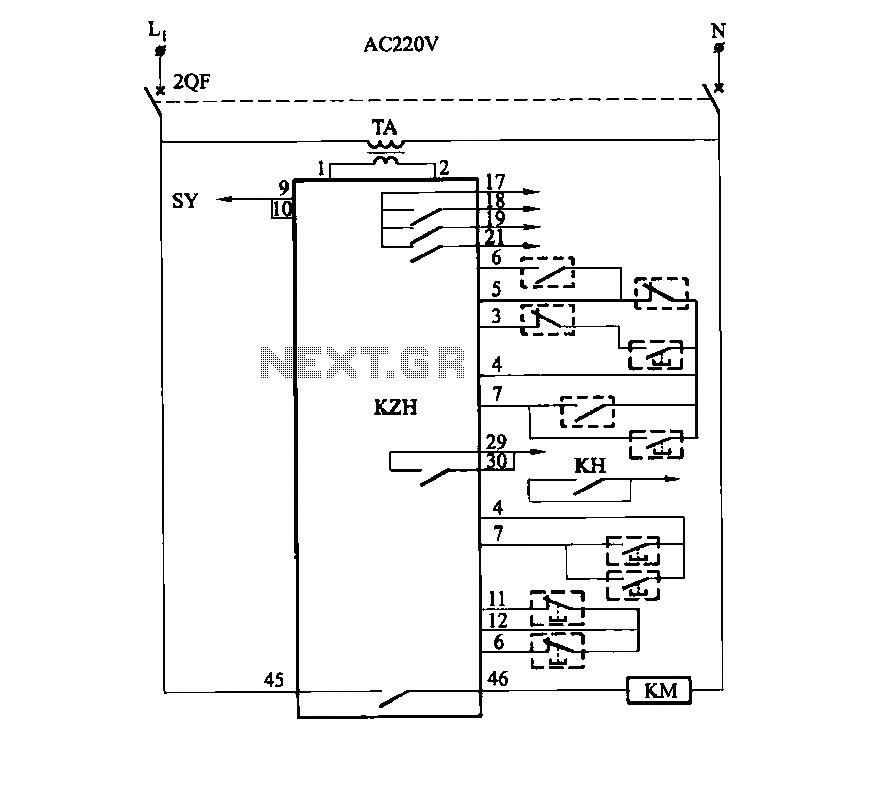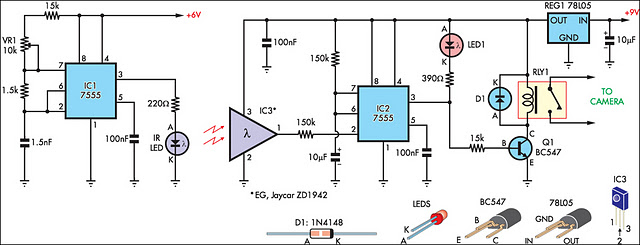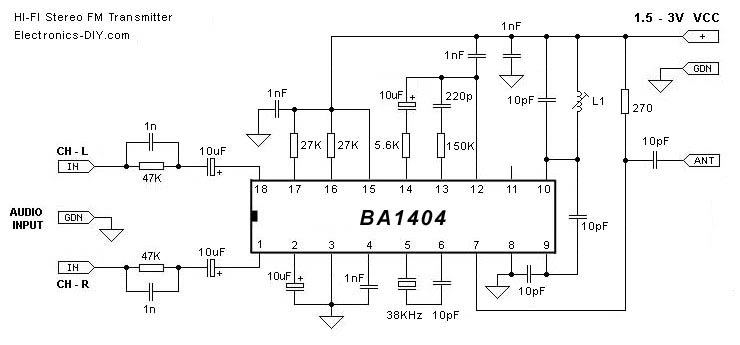
dc motor control circuit
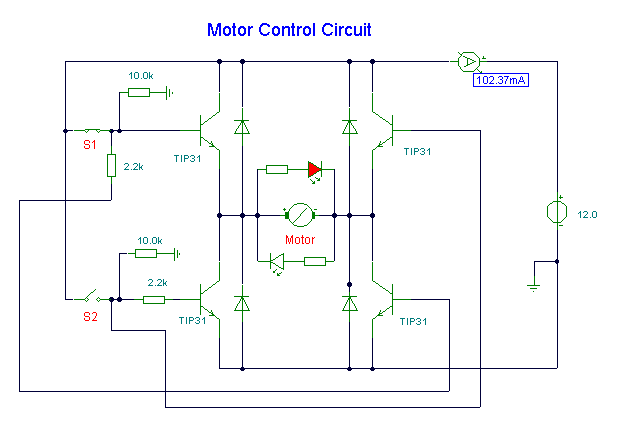
S1 and S2 are normally open, push-to-close, momentary switches. The diodes can be red or green and serve solely as indicators for direction. The TIP31 transistors may need to be adjusted based on the motor specifications. It is important to note that operating under load increases current consumption. This circuit is designed to control a small motor used for opening and closing a pair of curtains. Unlike fully automatic systems, this design allows for manual control over the amount of light entering a room. The four diodes surrounding the motor function as back EMF diodes and should be selected according to the motor's requirements. For a 12V motor drawing 1 amp under load, 1N4001 diodes are recommended.
The circuit utilizes two normally open push-button switches, S1 and S2, which allow for user interaction to control the motor's operation. The momentary action of these switches means that the motor will operate only while the buttons are pressed, providing a simple and effective way to manage the opening and closing of curtains.
The inclusion of diodes, which can be either red or green, serves a dual purpose. Primarily, they indicate the direction of the motor's rotation, enhancing user feedback during operation. The choice of diodes may also reflect aesthetic preferences or design requirements.
The TIP31 transistors in the circuit act as switches that control the motor's power based on the signals received from the push-button switches. It is crucial to select transistors that can handle the current requirements of the motor. The circuit should be designed with consideration for the load conditions, as running the motor under load will increase the current draw, which may necessitate the use of transistors with higher current ratings.
The four diodes positioned around the motor are essential for protecting the circuit from back electromotive force (back EMF) generated when the motor is turned off. This back EMF can potentially damage other components in the circuit, and thus, the selection of appropriate diodes is critical. For a 12V motor with a current draw of 1 amp under load, the use of 1N4001 diodes is suitable due to their voltage and current ratings.
Overall, this circuit design provides a practical solution for controlling the light entering a room through curtains, offering users the ability to adjust the opening based on their preferences while ensuring the longevity and reliability of the electronic components involved.Here, S1 and S2 are normally open, push to close, press button switches. The diodes can be red or green and are there only to indicate direction. You may need to alter the TIP31 transistors depending on the motor being used. Remember, running under load draws more current. This circuit was built to operate a small motor used for opening and closi ng a pair of curtains. As an advantage over automatic closing and opening systems, you have control of how much, or how little light to let into a room. The four diodes surriunding the motor, are back EMF diodes. They are chosen to suit the motor. For a 12V motor drawing 1amp under load, I use 1N4001 diodes. 🔗 External reference
The circuit utilizes two normally open push-button switches, S1 and S2, which allow for user interaction to control the motor's operation. The momentary action of these switches means that the motor will operate only while the buttons are pressed, providing a simple and effective way to manage the opening and closing of curtains.
The inclusion of diodes, which can be either red or green, serves a dual purpose. Primarily, they indicate the direction of the motor's rotation, enhancing user feedback during operation. The choice of diodes may also reflect aesthetic preferences or design requirements.
The TIP31 transistors in the circuit act as switches that control the motor's power based on the signals received from the push-button switches. It is crucial to select transistors that can handle the current requirements of the motor. The circuit should be designed with consideration for the load conditions, as running the motor under load will increase the current draw, which may necessitate the use of transistors with higher current ratings.
The four diodes positioned around the motor are essential for protecting the circuit from back electromotive force (back EMF) generated when the motor is turned off. This back EMF can potentially damage other components in the circuit, and thus, the selection of appropriate diodes is critical. For a 12V motor with a current draw of 1 amp under load, the use of 1N4001 diodes is suitable due to their voltage and current ratings.
Overall, this circuit design provides a practical solution for controlling the light entering a room through curtains, offering users the ability to adjust the opening based on their preferences while ensuring the longevity and reliability of the electronic components involved.Here, S1 and S2 are normally open, push to close, press button switches. The diodes can be red or green and are there only to indicate direction. You may need to alter the TIP31 transistors depending on the motor being used. Remember, running under load draws more current. This circuit was built to operate a small motor used for opening and closi ng a pair of curtains. As an advantage over automatic closing and opening systems, you have control of how much, or how little light to let into a room. The four diodes surriunding the motor, are back EMF diodes. They are chosen to suit the motor. For a 12V motor drawing 1amp under load, I use 1N4001 diodes. 🔗 External reference
